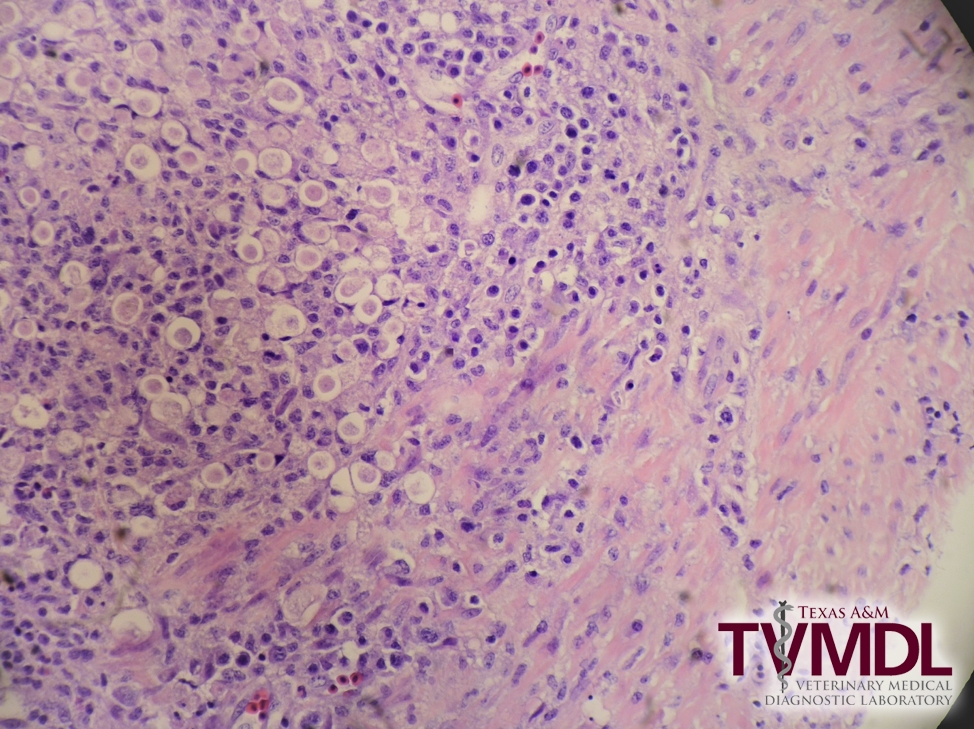Histomoniasis “Blackhead” in Bobwhite Quail
By Gabriel Senties-Cue, MVZ, EPAA, MS
Histomoniasis, a protozoal disease of birds also known as “Blackhead”, was diagnosed in a flock of Bobwhite quail. Three dead females and one dead male, 8-month-old, Bobwhite quail were submitted to the Texas A&M Veterinary Medical Diagnostic Laboratory (TVMDL) with a clinical history of increased mortality. History indicated the flock exhibited enteritis and had been dewormed the previous month. Upon necropsy examination, multifocal, pale and irregular in size foci were seen scattered over the surface of the liver. Both ceca were dilated with yellowish-tan caseous cores in the lumen and small raised nodules on the mucosa. Histologically, large numbers of protozoal organisms consistent with Histomonas meleagridis associated with inflammatory cells were seen in the submucosa and muscular layer of ceca (Fig. 1). In liver sections extensive areas of necrosis with vacuoles, some containing protozoal organisms undergoing degeneration, were seen. The lack of a treatment for histomoniasis has caused this disease to become common again in gallinaceous species.
For more information about this case, contact Dr. Senties-Cue, resident director at TVMDL Center. To learn more about TVMDL’s test catalog, visit tvmdl.tamu.edu or call 1.888.646.5623.
